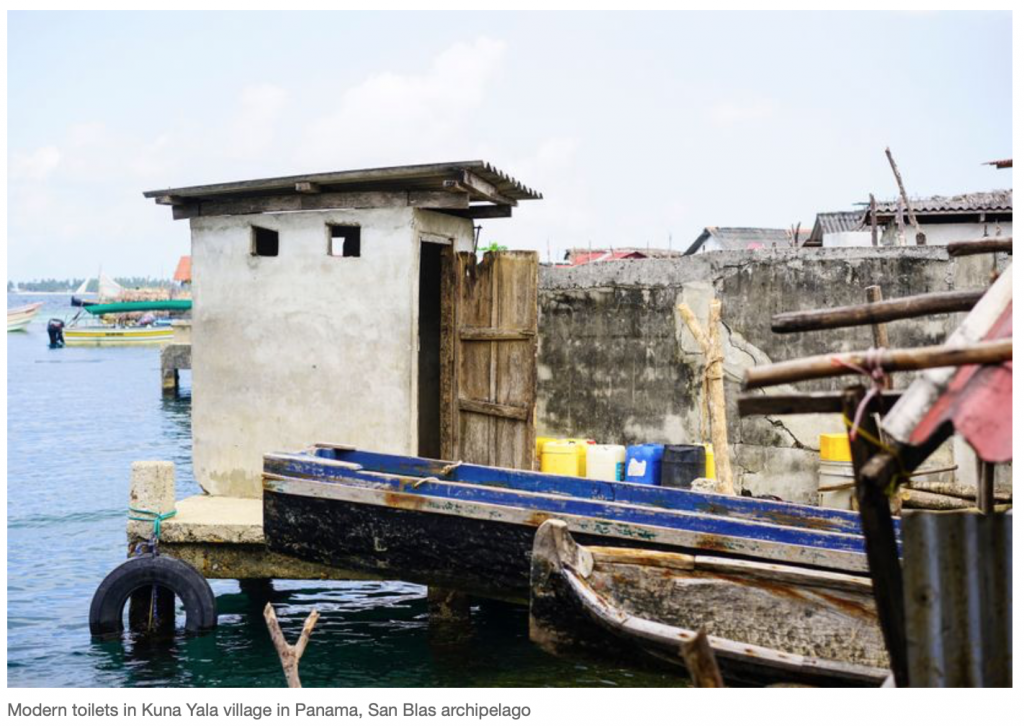Across the world, 4.5 billion people live without a household toilet. Even though 4.8 billion people have a cell phone, 19.5 million people are on antiretroviral therapy for AIDS, and 2 billion people use Facebook to stay connected, we are not yet able to make access to toilet a human right. Part of the challenge is that it is an issue to which the majority of middle-class and above, the ones who create development policies, cannot relate.
Sanitation is something that must be considered and addressed by all however and it is something that can affect us all. Poor sanitation is linked to viruses and bacteria that find their way into water streams and other places, adding preventable illnesses, such as typhoid, cholera, roundworms, diarrhoea to challenged ecosystems. When one billion people around the world, 60 per cent living in India, practice open defecation, the scale of the challenge translates into a vicious cycle of common infections such as diarrhoeal diseases.
Children are often the most affected. Diarrhoeal diseases affect over 1.7 billion children and causes nine per cent of all deaths among children under five years old. Improving water, sanitation and hygiene (WASH) is sure way to reduce the incidence as 58 per cent of these deaths direct to poor WASH. In other words, 300,000 under-five deaths could be averted. Poor or non-existent sanitation also can limit girls’ access to education and create unsafe situations them. In Vietnam, for instance, progress in sanitation is creating better opportunities for kids to go to school.
It’s not surprising that sanitation is a critical enabler to achieving the Sustainable Development Goals (SDGs). SDG 6 in particular aims to “ensure availability and sustainable management of water and sanitation for all.”
There are efforts underway to improve sanitation. We know that USD 1 spent in eliminating open defecation yields at least USD 6 in return, in the form of prevention from infectious diseases and other benefits,and just about half for the same amount spent on sanitation. In Dakar, Senegal, sewer-based systems cost USD 54.64 while fecal waste management costs USD 11.63. While the latter is cheaper, it places an extra burden on household with avoidable and preventable health consequences. Nearly five million cases of diarrhoea are treated annually with antibiotics in Brazil, Indonesia, India and Nigeria but evidence suggests that WASH could reduce the volume by 60 per cent in these countries. Antimicrobial resistance is an important issue.
More needs to be done.
In order to reduce the burden of infectious diseases and improve health outcomes globally, basic services need to become the new normal, just as regulators and mobile network operators managed to leapfrog to connect almost a billion African with technology. In Kenya, Sanergy offers a model for the Africa we have. Their Fresh Life Toilet creates local employment while addressing sanitation needs in informal settlements. They offer pay-per-use toilets run by local entrepreneurs, toilets in residential plots as well as schools, clinics and churches. It is an integrated model capturing the toilet economy value chain by collecting waste, converting it into organic fertiliser, insect-based animal feed, and renewable energy.
There also might be a solution in making a business case inspired by the pay-as-you-go solar systems. Existing mobile infrastructure through the Internet of Things provides an opportunity to connect mobile phone users to a toilet, but most importantly, to apply the circular economy‘s model in dealing with health-related issues. Toilets can cost USD 200 to USD 300 or more which is a barrier to access. But linking health improvement opportunities though connected toilets where a diagnostic can be provided by analysis, offer a pathway to rethink the toilet economy. Digital sanitation systems can provide consistent up-to-date and geo-lacalized health data set, yet they are not factored into the USD 117 billion market for Internet of Things in healthcare.
While it is possible to rethink smart cities, we need to integrate and find solutions to increasing awareness and toilet usage, decreasing cost through innovative financing and addressing poor levels of service of public utilities and resolving issues about logistics and transport. Most specifically, there is a need to integrate mobile money expansion to channel resources to support cashless transactions to pay for toilet usage, latrine emptying and possible innovative public private purpose schemes. Subscribe to The Morning Email.Wake up to the day’s most important news.
Ultimately, if we want to drive transformation through SDGs, we need to make sanitation an added benefit of financial inclusion to generate interest, resources and solve the public health problems that are eroding gains made under the Millennium Development Goals.

